Mold in your home or office is a recipe for disaster. Mold can damage your items, floors, walls, and structures. Exposure to a large number of mold spores can trigger mold allergy symptoms such as watery eyes, itching, sneezing, and coughing.
Mold Inspection 101
If you notice a musty smell, you may have mold in your home. Before things get from bad to worse, have a professional carry out a mold inspection Santa Rosa, CA. A mold inspection typically involves a thorough examination of a property to identify any signs of mold and determine the extent of the problem. Mold inspections usually include the following:
- Visual inspection: The inspector will visually check all areas of your home, including the attic, basement, and behind walls for signs of mold growth. Mold thrives in damp environments. Plumbing leaks can lead to water damage, promoting mold growth. A comprehensive inspection can also help find hidden water leaks
- Moisture assessment: Excess moisture is a common cause of mold. Inspectors use moisture meters and thermal imaging cameras to identify areas with excess moisture and water damaged areas. Once the affected areas are identified, it’s easy to pinpoint potential mold hotspots
- Sampling: If mold is found or suspected, the inspector may take air and surface samples to be analyzed in a laboratory. A comprehensive analysis can confirm the presence of mold and identify the specific type of mold, helping mold remediation specialists better understand the health risks related to mold exposure and develop effective remediation strategies
- Air quality testing: This involves taking indoor air samples to test for mold. To assess the severity of a mold problem, a professional compares the indoor air quality to the outdoor air quality
- Reporting: After the mold inspection, the inspector will share a detailed inspection report including information on any mold that was found with you. An inspection report should explain the possible health risks of mold exposure, highlight the source of the moisture problem, and include recommendations for mold remediation and preventing future mold growth
- Recommendation for remediation: If mold is found, the inspector may recommend an action plan to remove it and address the root cause of the problem. The professional may suggest minor or major repairs, depending on the extent of the damage
The Importance of Mold Inspection
Exposure to a large number of mold spores can cause allergic reactions and respiratory problems. A mold inspection in Santa Rosa, CA helps detect the presence of harmful mold types, allowing for timely remediation to prevent health risks. Mold can cause structural damage to buildings by breaking down wood, drywall, and other materials. Early detection through testing allows for intervention before significant damage occurs, saving you headaches and money down the road.
In certain jurisdictions, there may be regulations or guidelines regarding mold levels in residential and commercial properties. Testing ensures compliance with these standards, helping avoid legal issues or penalties. Mold is not always visible or easily detectable. A mold inspection can uncover hidden mold growth within walls, ceilings, or HVAC systems.
Signs you Have Mold in Your Home
Watch out for these signs that indicate mold in your home.
- Visible mold growth: This is the most common sign of mold in your home. Mold can appear in black, white, green, or even pink patches, depending on the type and where it’s growing
- Musty odors: A persistent musty or earthy smell is another common sign of mold in the house. Even if you can’t see mold, but notice an earthy smell, it’s likely that you have a mold problem
- Water leaks: Water leaks can help create the right condition for mold growth. Even if a leak has been fixed, mold may have grown in the affected area
- Water stains or discoloration: Any signs of water damage on your ceilings, walls, or floors can indicate potential mold growth, especially if the area gets wet or damp easily
- Allergic symptoms or respiratory issues: If you or other household members get sick too often or experience allergic reactions or respiratory issues without an apparent cause frequently, mold may be growing in your home
- Peeling, cracking, or warping: If your wallpaper, paint, or building materials are peeling, cracking, or warping, mold may have spread to different parts of your home
- Rust: Rusting pipes or other metallic surfaces can indicate high humidity levels, which can help create ideal conditions for mold growth
Do You Have Mold in Your Home? Schedule a Professional Mold Remediation
If you notice one or more signs of mold growth, consult a mold remediation specialist as soon as possible. Mold remediation experts have the expertise and experience to accurately assess the nature of mold problems and identify the most appropriate mold removal methods. They know the right way to handle different types of mold and also address its root cause, preventing it from coming back.
Professionals use advanced equipment and techniques to find and remove hidden mold. Mold grows in moist environments. Mold remediation experts use heavy duty fans and humidifiers to dry out wet areas and maintain the ideal humidity level.
Attempting to remove mold yourself could result in inhaling a significant number of mold spores or making errors that could lead to cross-contamination. Mold remediation experts use tried and tested methods to prevent mold spores from spreading. With their trained eyes, they can identify the subtle signs of mold growth, which amateurs often miss.
Whether mold has infiltrated your home or office, Bravo Restoration & Construction stands ready to assist. We effectively eradicate mold, providing a lasting solution to your mold-related concerns. For further information on our services, feel free to contact us at 707-837-0675.
